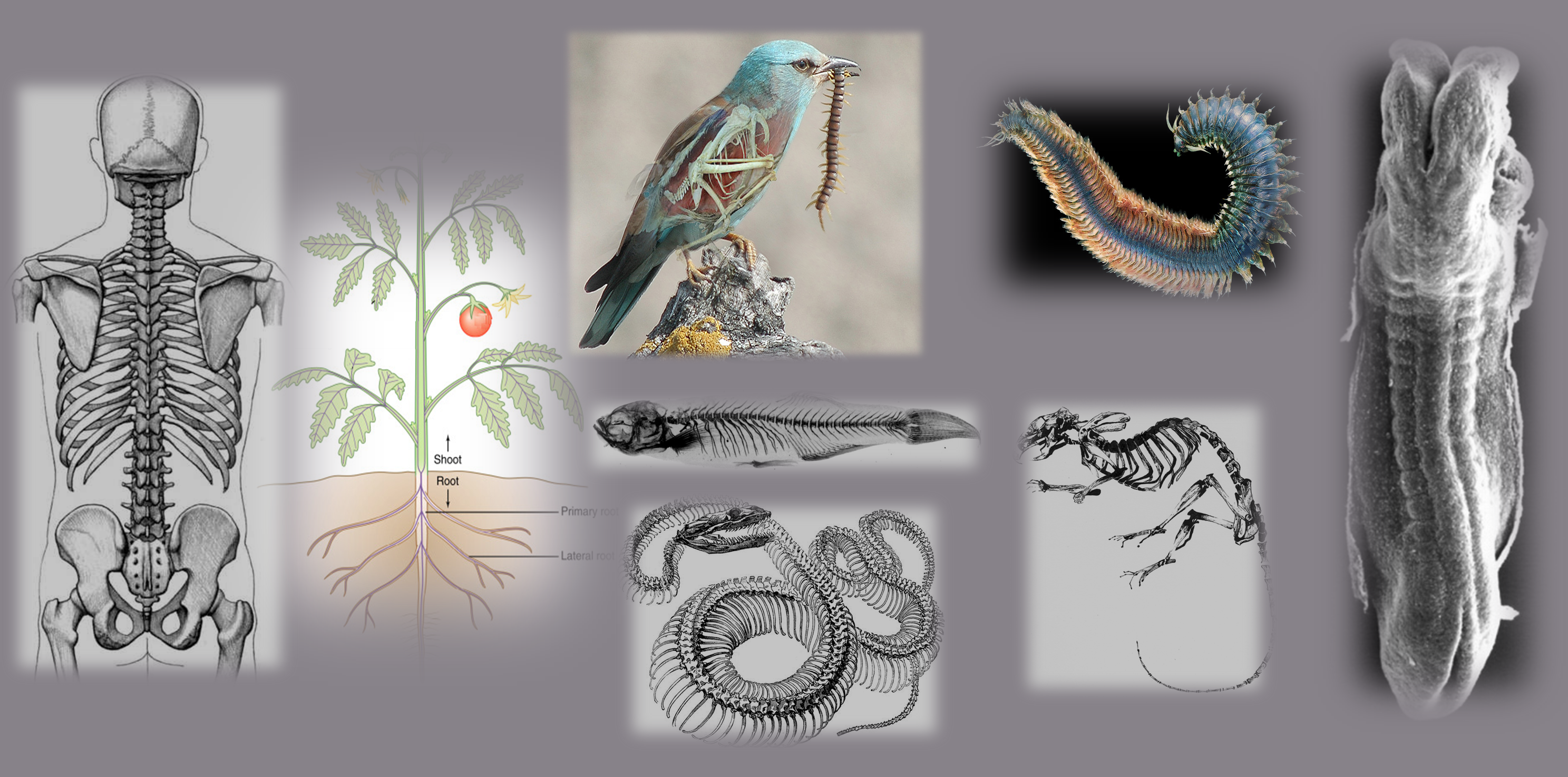Underlying Principles of Somitogenesis

Diverse multicellular organisms, from plants to basal chordates and humans, display metameric organization of their major body axis during development and growth. Somites, bilateral blocks of mesoderm, are embryonic tissues segmenting sequentially from head to tail succession while the vertebrate embryo axis elongates. Axis elongation is coupled to sequential segmentation of somites (somitogenesis) in all vertebrate species from zebrafish to humans [1]. Somites are embryonic precursors of vertebrae, ribs, and associated skin, muscle, and cartilage tissues. Somite borders further guide blood vessels and peripheral nervous system during early embryogenesis. When somitogenesis goes awry, it results in congenital vertebral malformations (CVMs) in humans [2].
Somitogenesis is a robust patterning process in the sense that a well-conserved total count as well as specific sizes of somites form for each species throughout their early embryo development [3]. However, somitogenesis is also extremely versatile in the sense that periodicity of somite segmentation varies drastically from a species to the next, as well as the total counts of somites. For instance zebrafish segment their somites every ~25 min, whereas humans make their somites every 5-6 hours. Zebrafish segment ~32 pairs of somites in total even when their embryo sizes are reduced drastically, whereas corn snakes segment more than 300 pairs of somites along their body axis [4].
Our lab is interested in discovering minimal design principles of sequential segmentation, within the context of somitogenesis. Earlier work showed that the molecular segmentation clock instructing periodicity of segmentation, relays its information by regulating the posterior Fgf signaling gradient in an inhibitory fashion [5]. 1-) Posteriorly polarized cell signaling, 2-) inhibitory coupling from an oscillatory clock to this polarized signal, as well as 3-) retreat of the polarized signal over groups of uncommitted cells appear to be the three rules of sequential segmentation [6].
Further Reading:
1. Dequéant ML and Pourquié O, "Segmental patterning of the vertebrate embryonic axis", Nat Rev Genet. (2008) Cross Ref
2. Shah SA and Song K, "Congenital scoliosis", Lovell and Winter's Pediatric Orthopaedics, 7th Edition, Chapter 18 (2020) ISBN: 978-1-60547-814-2.
3. Lewis J, "From signals to patterns: space, time, and mathematics in developmental biology", Science (2008) Cross Ref
4. Gomez C, et al., "Control of segment number in vertebrate embryos", Nature (2008) Cross Ref
5. Simsek MF, et al., "Periodic inhibition of Erk activity drives sequential somite segmentation", Nature (2023) Cross Ref
6. Simsek MF and Özbudak EM, "A design logic for sequential segmentation across organisms" FEBS Journal (2023) Cross Ref